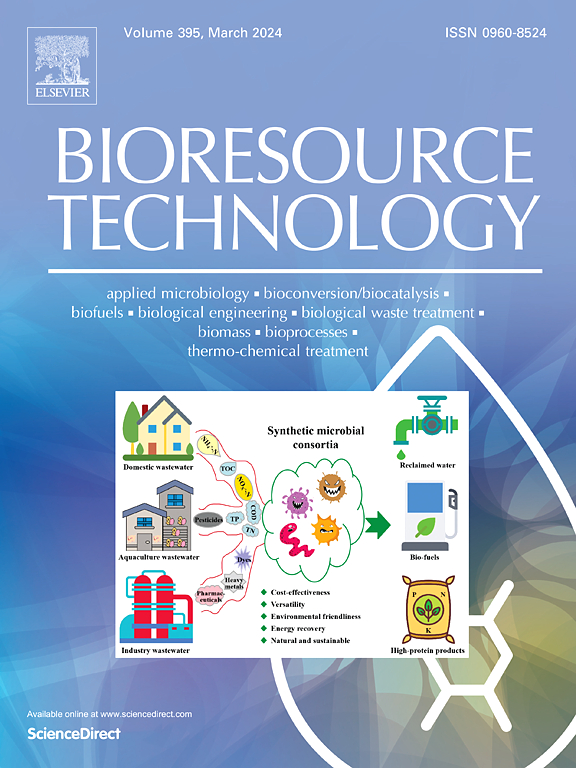Enhanced dissimilatory nitrate reduction to ammonium and electron transfer mechanisms in bidirectional electron transfer biofilm constructed by iron phthalocyanine
IF 9.7
1区 环境科学与生态学
Q1 AGRICULTURAL ENGINEERING
引用次数: 0
Abstract
Bidirectional electron transfer biofilms (BETB) could efficiently reduce nitrate without accumulating nitrite, representing a promising biological electrochemical denitrification technology. This study utilized iron phthalocyanine modified carbon felt (FePc-CF) to enrich electroactive bacteria, constructing a long-term stable FePc-BETB. Its nitrate removal rate reached 91%, far exceeding the traditional nitrate-reducing biocathode (45%) and Con-BETB (46%). The dissimilatory nitrate reduction to ammonium (DNRA) dominated nitrate reduction in FePc-BETB, consuming 35% of the total electrons. Additionally, FePc-BETB effectively reduced the accumulation of NO2−-N and N2O. Electrochemical analysis demonstrated FePc-BETB exhibited stronger electrochemical activity and electron transfer capability. Mediated electron transfer (MET) enhanced by increased extracellular humic acid in FePc-BETB favored the electron supplement for nitrate removal. The relative abundance of nrfA, marker of the DNRA, increased significantly. This study provided new insights into regulating denitrification and DNRA pathways and treating nitrate wastewater lacking electron donors.

求助全文
约1分钟内获得全文
求助全文
来源期刊

Bioresource Technology
工程技术-能源与燃料
CiteScore
20.80
自引率
19.30%
发文量
2013
审稿时长
12 days
期刊介绍:
Bioresource Technology publishes original articles, review articles, case studies, and short communications covering the fundamentals, applications, and management of bioresource technology. The journal seeks to advance and disseminate knowledge across various areas related to biomass, biological waste treatment, bioenergy, biotransformations, bioresource systems analysis, and associated conversion or production technologies.
Topics include:
• Biofuels: liquid and gaseous biofuels production, modeling and economics
• Bioprocesses and bioproducts: biocatalysis and fermentations
• Biomass and feedstocks utilization: bioconversion of agro-industrial residues
• Environmental protection: biological waste treatment
• Thermochemical conversion of biomass: combustion, pyrolysis, gasification, catalysis.
 求助内容:
求助内容: 应助结果提醒方式:
应助结果提醒方式:


